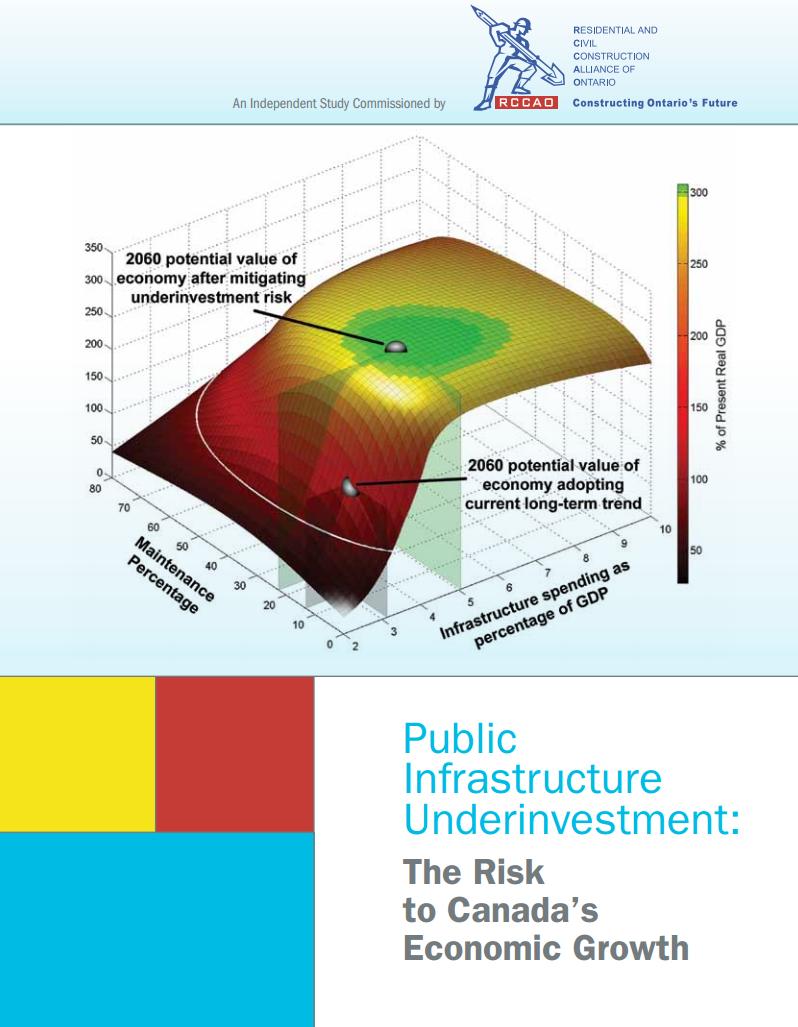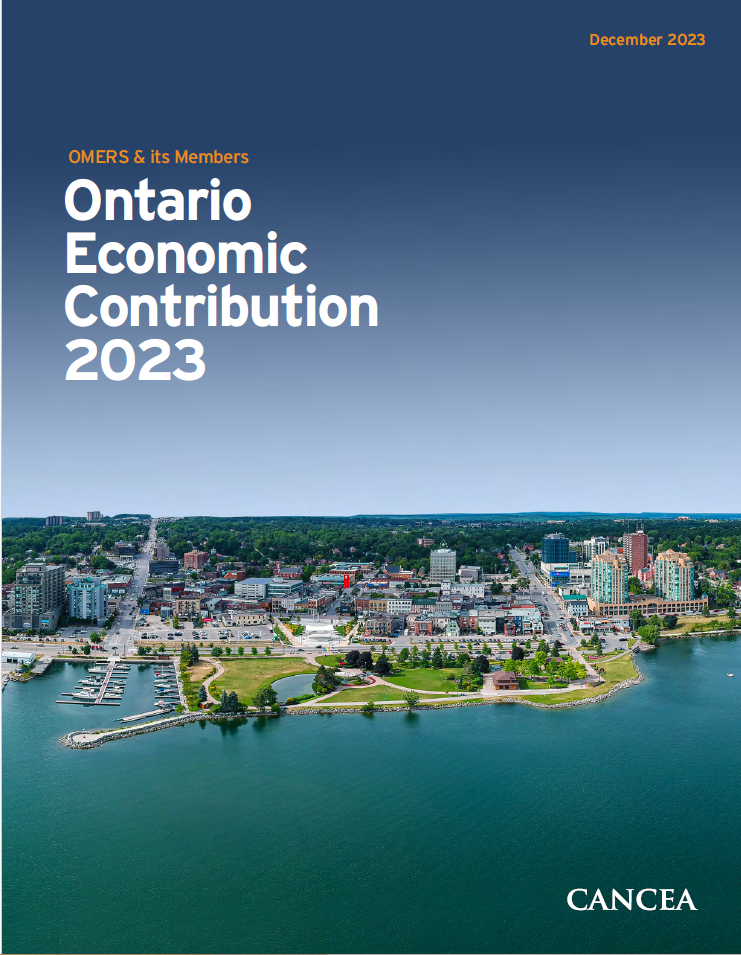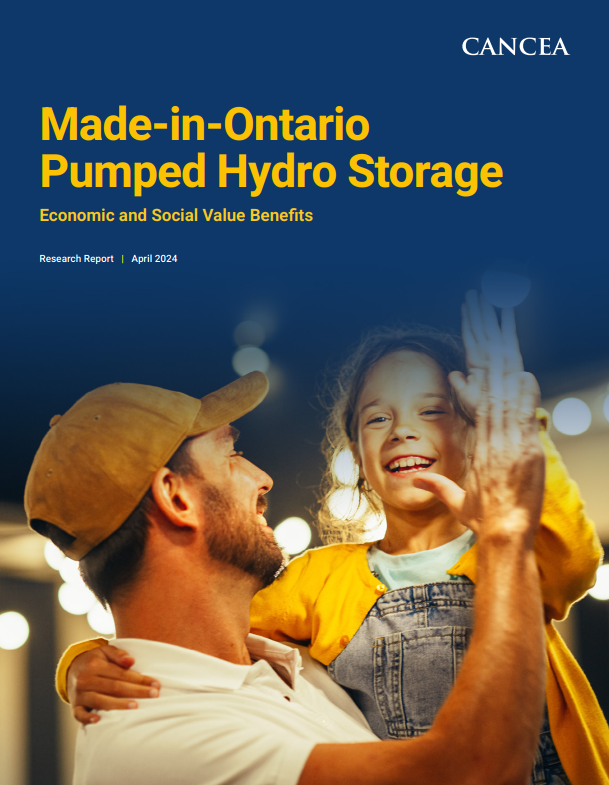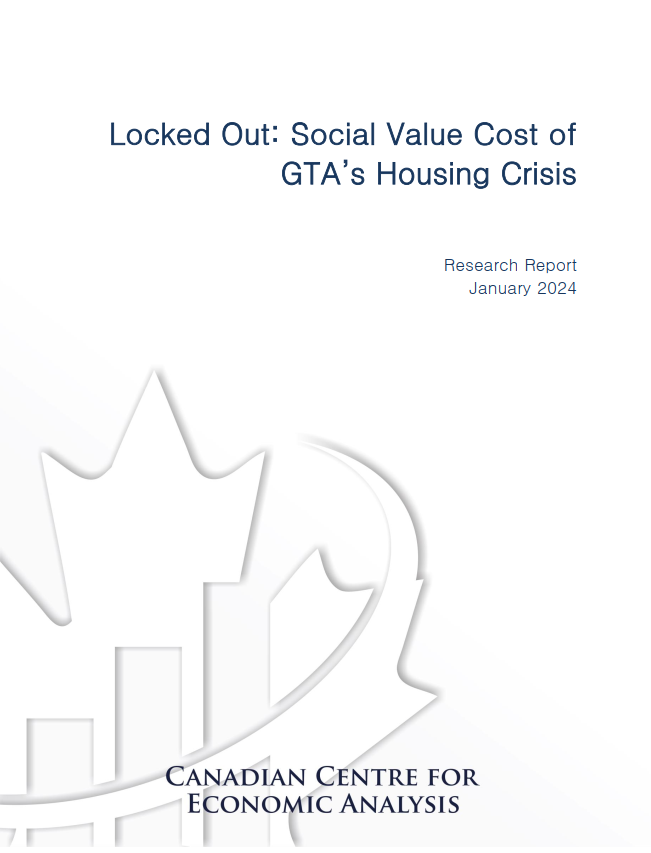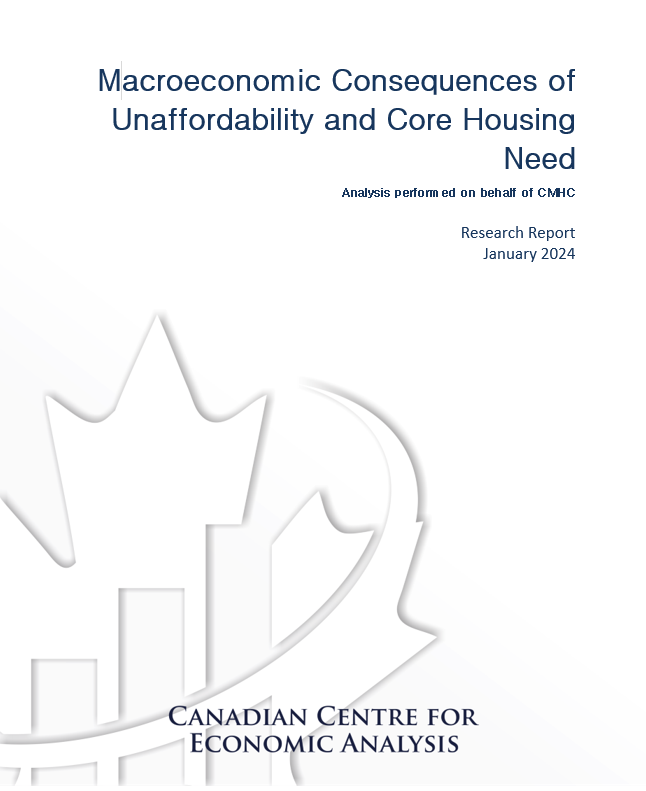For some time, experts have been warning of a deficit between the current state of Canadian infrastructure and what is required—the so-called “infrastructure gap.” And, while it is well known that the quality and quantity of infrastructure has a direct impact upon how efficiently societies are able to operate and grow, individuals and businesses have yet to connect underinvestment in infrastructure to their personal prosperity. Citing a municipal infrastructure deficit in the billions of dollars sounds staggering, but it may not resonate on a personal level with the public. In general, when large prospective numbers are used, we are at risk of becoming numb to the real meaning behind these numbers, and the real risks of a large infrastructure deficit can feel abstract. Our findings create a clear linkage between sustained investment in infrastructure and the prosperity of individual Canadians.
Over the next 50 years there is the risk of public infrastructure underinvestment that could cost the Canadian economy 1.1 per cent of real gross domestic product (GDP) growth. The effect of this underinvestment on the Canadian public breaks down as follows: It will cost the average Canadian worker between $9,000 and $51,000, with the younger generation disproportionately at risk, and decrease the after-tax profitability of Canadian businesses by a long term average of 20 per cent. Businesses with long-term goals are at greatest risk.
These risks have largely escaped public attention, despite the recent global focus on infrastructure investment as a short-term stimulus measure. The solution is more complex than simply investing in narrowing the infrastructure gap. That approach will not guarantee the best possible growth for the economy. It is arguably more appropriate to extend the focus to long-term infrastructure policies that maximize economic growth in the future, starting with the current state of infrastructure today. Stable infrastructure spending—as opposed to the current volatility in spending—promotes stronger economic growth and guarantees more funding will be available for infrastructure.
Download the Report: RCCAO_Report_JULY2010_LOWRES
